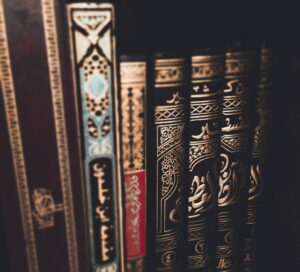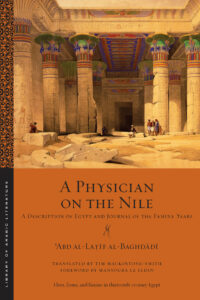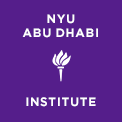A Physician on the Nile begins as a description of everyday life in Egypt at the turn of the seventh/thirteenth century, before becoming a harrowing account of famine and pestilence. In this interview about the book, the second of a two-part series (read the first part here), translator Tim Mackintosh-Smith sits down with A. J. Naddaff to discuss uncertainty, cannibalism, ghosts, picnic pies, and more.
AJ: I’ve been interrupted — right after we momentarily hung up, a piercing fire alarm went off sending me running down the stairs. It’s just a drill and I should be back in about 10-15 minutes max. I’m so sorry for the inconvenience. This only happens once a year. What timing!
Tim: No problem! It’s all in a day’s interviewing. (Unless it’s a real fire—God forbid.)
 The way we are often taught history in the West is that there was the classical period proceeded by a fissure of nothingness and then a renaissance (rebirth) alongside a European scientific revolution. How does ʿAbd al-Laṭīf, perhaps not so dissimilar to other classical Arab polymaths, fit into the flow of history?
The way we are often taught history in the West is that there was the classical period proceeded by a fissure of nothingness and then a renaissance (rebirth) alongside a European scientific revolution. How does ʿAbd al-Laṭīf, perhaps not so dissimilar to other classical Arab polymaths, fit into the flow of history?
ʿAbd al-Laṭīf was part of a continuum that was never really cut off. Among his famous sayings is the one about knowledge passing from nation to nation, from generation to generation, and from land to land. He goes from talking about the pyramids to talking about the Torah, then looks at the Qur’an, and then turns to classical authors. And he sees himself as part of this continuum. You know, if you are going to be Eurocentric, yes, you might look back and think of there being a trough. But of course, there wasn’t as far as he was concerned. Aristotelian scholars went all the way through and had a very rich history. ʿAbd al-Laṭīf thought of himself not only as an Aristotelian but as a kind of primitive Aristotelian who wanted to strip away the Arabic accretions that had been made and get back to the original. So, you know, there’s no point in talking about the Renaissance or rebirth because it really never dies. There’s one of the most famous lines of Latin poetry by Lucretius which goes “like runners they pass on the torch of life.” And I think this is very much how ʿAbd al-Laṭīf saw himself: as a guard of ʿilm—these are the books that are revealed from God—as well as the guardian of all these different canons including the Greeks, the Romans, and the Arabs and those writing in Arabic.
 How come most people in the West don’t know about him?
How come most people in the West don’t know about him?
Well, he was known quite early on. His book on Egypt was brought to Oxford in the seventeenth century by the Arabist Edward Pococke—of course it wasn’t published for some time. But why wasn’t it better known? Well partly because of not being published, but partly because even when he was published in Europe—because of this difficulty of pigeonholing him, there are a lot of great figures writing in Arabic who suffer from the same thing. Because they are polymaths, they don’t stick in the mind. They may say ʿAbd al-Laṭīf, the great what? Well, he was a great many things—an Aristotelian philosopher in his own right, a great calligrapher, a great grammarian. But all these things make him difficult to remember.
One of LAL’s stated goals is to publish “modern, lucid” English translations. What does that mean to you? How does this compare to other approaches to translation?
When I eventually read M. le baron Silvestre de Sacy’s translation of ʿAbd al-Laṭīf, I realized it was a lot of paraphrasing. And I do not like paraphrasing, I must say. I do like being quite literal. There is this argument of whether you are a taxidermist or an anatomist, and I’m definitely an anatomist. I chop things up with a scalpel to expose them to view, which I hope ʿAbd al-Laṭīf would have liked.
That being said, de Sacy is still a very good translator and an Arabist, but he does have these interpolations. You know, you might get something like ʿAbd al-Laṭīf has been talking about cannibalism and then de Sacy tends to add to the idea of this practice that it is a disgusting barbarism, which is a moral judgment in the interpretation. And I think the whole point of ʿAbd al-Laṭīf is that he is being a scientist; he is amoral. He just observes. And so, because you have to interpolate, you have to put in a certain amount of stuffing to reconstruct something for your reader. I would say ʿAbd al-Laṭīf is not so difficult to translate lucidly because he is a lucid writer himself in his choice of vocabulary by and large.
This makes me think of what you said in an interview with Christopher Rose on New Books Network—something about the fact that ʿAbd al-Laṭīf is a true scientist in the sense that he’s not afraid to admit his uncertainty.
Yes, I think I said something like certainty is pre-scientific, and doubt is scientific. In my introduction, I put Sir Carl Popper because he said something like the whole point of a theory is not that you can prove it but that you can disprove it when it’s wrong. The example that I like about ʿAbd al-Laṭīf is that he tries very hard to disprove Galen that the jawbone is one piece, not two pieces, and he looks at all these corpses. He looks at 2,000 jawbones. I’m not sure how many sacra he looked at but in the end, he says, “I’m not actually sure.” And that scientific ignorance is the mark of a scientist.
 In the Covid-19 era, health topics are constantly in the news with debates around “trusting the science.” What would ʿAbd al-Laṭīf say?
In the Covid-19 era, health topics are constantly in the news with debates around “trusting the science.” What would ʿAbd al-Laṭīf say?
I think he would totally and utterly agree that we should trust the science. I wish in a sense he had talked more about the epidemic that comes at the end of his book. But, you know, I suppose he was a bit doomed out—to coin a phrase—with the famine and cannibalism. But he was a total dyed-in-the-wool scientist. I mean look at what he says about the Nile. He says we have to have a database with detailed information about the rises and falls of the Nile every year in order to be able to be forearmed against problems of the future. If he were still alive now, he would be there at COP27, in Egypt by the way. He would be at the forefront of warnings about the future of the climate of the world.
In the introduction, you talk about an earlier translation of the book (titled The Eastern Key), completed in the 1960s by means of séances with the author who died 800 years prior. Of course, this coincided with a time when communicating with departed souls was on the rise. What are we to make of these claims? Should we take them seriously?
They’re there in black and white. You can quote it with a reference from a book that was published by a perfectly respectable London publisher. Either it’s undermining the whole idea of things somehow being believable if they’re print and brought out by a respectable publisher, or we have to take it at face value. I mean, I’m inclined to take it at face value myself. You know Shakespeare says “there are more things in heaven and earth, Horatio, than are dreamt of in your philosophy.” I have actually seen ghosts myself.

Magpie Lane, Oxford, by Newton2, via Wikimedia Commons (CC BY 2.5)
When did you see ghosts?
How can I start? I saw one in Oxford once in a kind of narrow alleyway. It was a guy in a black cloak who just disappeared before my eyes. I had a run-in with a poltergeist in the Maldives. It was inside a wardrobe and that was quite scary. It’s a ghost that you don’t see, but it makes noises. I suppose they would classify it as a jinni. What else? I have been in a fifteenth-century house in England where the door kind of opened, the handle went down and there was nobody there. Personally I do believe in ghosts. Whether ʿAbd al-Laṭīf appeared to these people or his spirit could have communicated with them… I don’t know.
But you yourself didn’t have any postmortem interventions?
No, no, I mean when you’re translating something I always feel that the person is looking over your shoulder. But actual intervention or guidance, no, none of that. I wish I had intervention or guidance with what I am working on at the moment—Ibn Khaldūn.
The text was in some ways a full circle. You worked as a teenager in an Egyptian museum, didn’t you?
Leslie Grinsell—or Uncle Leslie as we called him—had been a curator at the museum in the city where I was born and brought up, Bristol. But he was a very renowned Egyptologist among other things. We went through Egyptian grammar together and he got me working as a volunteer in the vaults under the museum where I had great fun. They let me loose on the Mapp collection – it had nothing to do with maps but with these two sisters who brought back all this stuff from Egypt in the 1960s and nobody had ever catalogued it. I sat there and typed up catalogue cards for all types of things including mummy cards. So I was kind of a gruesome teenager I suppose. We had sort of feet and fingers and detached bits and pieces – that was really where I came from, even before I was an Arabist.
Before we get into the second part of the book, we have to talk about the picnic pie.
Well, it has a sort of ridiculous name in Arabic. Raghīf al-ṣīniyyah, a loaf of bread and a china plate. It’s kind of like “the bread of the plate,” which is such an underwhelming name for what it is. It has three sheep in it. My favorite line in the whole book is when he says “by the way, if you want to add an extra sheep, it’s not a bad idea.” It’s not just the sheep but also the ninety different birds, fowl of one sort or another. It is mighty. Plus, cheese, samosas, rose water sprinklers, which are some kind of little pasties. You put all of this into a ginormous pie.

Nile River, by zolakoma, via flickr (CC BY 2.0)
Now to the second part. We’ve alluded a lot to the part of the book about cannibalism. Can you tell us a bit about what’s going on here?
The problem was that obviously Egypt was dependent on the rise of the Nile. So that its fields could be irrigated and you could have enough crops to feed the people. And for various reasons sometimes the Nile did not rise high enough, and it didn’t two years running while ʿAbd al-Laṭīf was in Egypt. The stocks of grain that they had stored ran out so there was nothing for the people to eat, or at least for the poorer people. You couldn’t get grain, the staple food. I put in my introduction a letter from the Cairo genizah, the collection from the old synagogue in Cairo. It’s a letter from a Jewish guy in Alexandria to his friend in Cairo saying, “Oh, we haven’t got any grain, people are eating each other up.” And we don’t know if that’s metaphorical or if it’s actual, but people did actually take to cannibalism, not so much murder-cannibalism, but they would sort of pick up bodies, people who died, and make the best use of them.
Are the scenes of cannibalism and murder in the book partially hyperbolic, then? What about the nauseating scene of the woman who is caught eating a roasted child but who will not confess?
That to me is the most horrific bit in the whole book. It’s because he says that she had lost or renounced her human nature. And that is the most terrifying thing about it. Also, when he talks about cannibalism becoming a sort of trend among people, you know, he tells the story about a woman who gets into it and who is quite well-off. She also loses her humanity. It is the story of those two women that I found to be the most frightening thing in the whole book.
It is certainly harrowing. I wonder if there is a body of literature on cannibalism because this would fit right in.
Sir Henry Yule has a book where he talks about cannibalism, and he refers the reader to ʿAbd al-Laṭīf, who was already published in French then, but says, “I will not quote any of the horrific details here.” Yule was not prudish or weak-stomached or anything. But I think ʿAbd al-Laṭīf ‘s details are so cold-blooded, so scientifically observed, that they do horrify. Even just talking to you now, the memory of it horrifies me.

Sanaa, Yemen, by Rod Waddington, via Wikimedia Commons (CC BY-SA 2.0)
The next topic is by no means lighter. But I want to ask you. You’re clearly in exile now—your home is in Yemen and you’re talking to me from Kuala Lumpur. And I’d like to ask you: what do you miss most about home? Are you planning on going back soon?
We’ve been here for three years and we haven’t been back. It’s not that we couldn’t; it’s practically quite difficult. I mean, you did say, what do I miss? Well, everything in a sense. First and foremost, the rest of the family—and God bless whoever invented Zoom. So at least we can keep in touch with them. Of course, I miss my library terribly because I like having my physical books. So, you know, that library. It’s a tiny room, but it’s actually crammed floor to ceiling with books. And the floor is covered with books. Like al-Jahiz, it might collapse and kill me. I often wonder if that will happen. But it was kind of my panic room when the missile attacks were at their worst. It has these alabaster-filled arrow slits or peepholes. There is not a lot to shatter, so I would go and sit there surrounded by my books with the house rocking. I miss the food. This time of year, early November, the mornings in Sanaa are so crisp. When it gets to this time of year, it makes me want to go and walk in the mountains. We’re a bit hot and sweaty here in Kuala Lumpur, so I miss that a lot. As for going back, it is my home—as a foreigner, there’s a kind of added layer of difficulty about going back. The current people who are in charge do not like people who disagree with them. Before it was a place that was very easygoing, and Yemenis were—and still are—easygoing. I’ll just have to wait and see what happens.
Thank you for being so reflective. To lighten up the mood, you’ve mentioned your current project for LAL. What is it?
It is Ibn Khaldūn’s Taʿrīf, sort of the opposite of his Muqaddimah, his famous “Introduction” that comes at the front of his big history.
What’s most difficult about that?
What is so hard about it as a translator is the fact that he quotes extensively, verbatim, his considerable correspondence with literary figures of the age—in particular Ibn al-Khatīb, the great master of sajʿ (rhymed prose), which is all done for the sound effect. He quotes his letter to the Sultan of Tunis, on behalf of the Sultan of Granada, thanking him for his gift of horses and slaves. If you’re Ibn al-Khatīb you don’t just say thank you: he enumerates all the colors of the horses. And he has a list of famous horses from the past—all of which require annotation. It sounds fantastic. I sometimes read it to the young ones here and they say, “That sounds brilliant.” I’m like, “Yes, but what does it mean?”
—
Tim Mackintosh-Smith is a noted British travel author, best known for his trilogy on the renowned Moroccan world-traveler Ibn Baṭṭūṭah, which earned him a spot among Newsweek’s top twelve travel writers of the past hundred years. Since 1982, he has lived in Sanaa, Yemen.
A. J. Naddaff is a writer and Ph.D. student in Comparative Literature at Stanford University.

